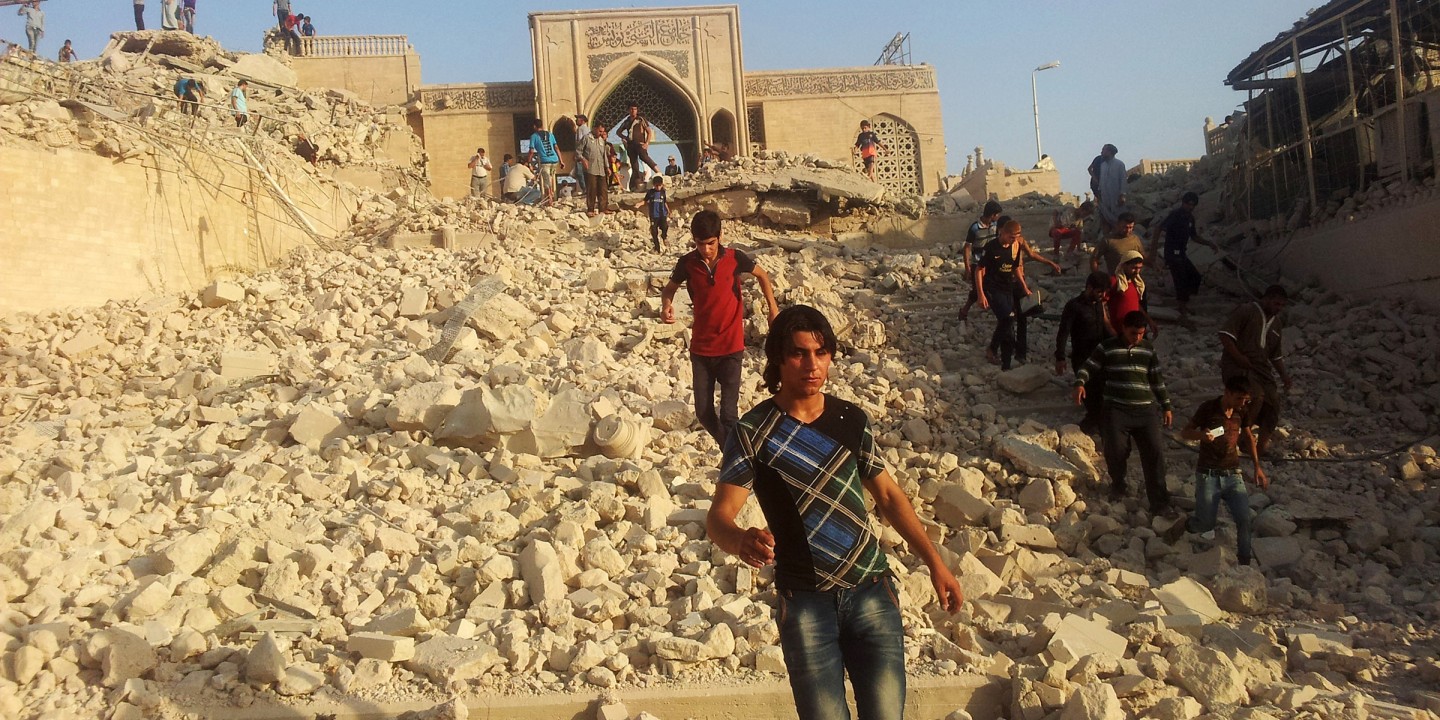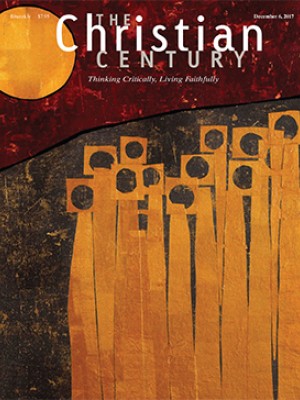Archaeologists want to hold off on rebuilding Jonah’s mosque in Mosul
An Iraqi-British team hopes to excavate an ancient Assyrian palace found under the demolished shrine, which local authorities are eager to restore.

Three years ago the self-described Islamic State destroyed the mosque at the site of what many Muslims believe to be the tomb of Jonah, which for centuries drew Muslim and Christian pilgrims to Mosul, the site of the ancient city of Nineveh.
Now that ISIS has been driven from Iraq’s second-largest city, local authorities and others say it is imperative to start reconstructing the Mosque of the Prophet Jonah. The mosque had marked the site since the 12th century, along with the ruins of a seventh-century Christian church.
“Jonah’s Mosque is a centerpiece of our collective memory,” said Hafidh al-Rahho, a lecturer in Islamic architecture at Ishik University in Erbil.
But archaeologists are asking those lobbying for an immediate reconstruction to hit the brakes. They first want to excavate the remains of an ancient Assyrian palace that the Islamic State’s destruction has revealed below the demolished mosque.
Read our latest issue or browse back issues.
“What happened was a tragedy, yet it’s also a chance to discover the last virgin monuments from historical Nineveh,” said Zaid Issam, an Iraqi architect. “We can’t turn a blind eye to the fact that it was originally built on a great archaeological mound.”
Under the Assyrians, Nineveh was the largest city in the world in the seventh century BC. A version of the Hebrew Bible story of Jonah is in the Qur’an. A hadith from the recorded sayings of the prophet says, “Whoever cannot visit me, let him visit the tomb of my brother Jonah,” noted Muslim Fakhri, a photographer who has lived near the mosque since childhood and captured it in his work.
The militants who blew up the mosque in July 2014 claimed it promoted idolatry. In their thinking, giving special importance to monuments, statues, and tombs violates the teachings of Islam.
Recently, an Iraqi-British team found tunnels under the mosque leading to a palace complex belonging to Assyrian kings. The team members saw stone sculptures of war and fertility gods alongside cuneiform inscriptions dating to 600 BC. They discovered a decorative gate to the palace, home to three successive Assyrian kings: Sennacherib, Esarhaddon, and Ashurbanipal. In biblical accounts, Sennacherib leads a series of military campaigns to capture Babylon and Jerusalem.
The prospect of excavation, however, worries local Muslim authorities. Layla Saleh, head of the Iraqi government’s cultural heritage department in Nineveh, said negotiations between the archaeologists and the waqf, or Islamic Trust in Mosul that oversees the mosque, have been difficult.
“The local religious authority sees the site as if it was theirs only,” Saleh said.
The waqf did not respond to requests for comment.
An excavation of the palace could adversely affect the tomb, which dates from medieval times. The tomb is directly under the ruins of a modern building and on the same level as the Assyrian palace, according to archaeologist Eleanor Robson, chair of the British Institute for the Study of Iraq, who visited the site in April. A full excavation of the palace would necessitate exposing the tomb and possibly disassembling parts of it.
“Either way, some of the shrine or the palace will be lost,” she said.
This is not the first debate sparked by archaeological digs. In 1850, the city’s mufti, or religious judge, issued a fatwa demanding that English archaeologist and diplomat Austen Henry Layard stop his excavations at Jonah’s shrine.
Layard moved to another site nearby, where he and his Iraqi colleague Hormuzd Rassam discovered the treasure trove of the Ashurbanipal Library which belonged to one of Assyria’s last kings. That archive of thousands of cuneiform tablets documented more than a millennium of Mesopotamian history, including the oldest clay-etched narrative of the deluge story that preceded the Bible’s account of Noah and the flood.
Given those past finds, researchers are imagining the potential discoveries in the buried palace.
Still, many want to avoid conflicts over religious issues, especially when war has traumatized so many.
“The site does not belong to a certain group; it is evidence of the wide sweep of our city’s history,” said Omar Mohammed, a Mosul native who is a Near East scholar at École des Hautes Études in Paris. He supports the interfaith, multipurpose plan for the site.
The shrine has also long been a site for Christian pilgrimage and prayer.
“The tomb most likely belongs to a church patriarch named Hanna Nishu who died in 700,” said Hikmet Bashir al-Aswad, former head of the Mosul Museum. “Today’s mosque is a repurposed church from the 13th century.”
Before the arrival of the Islamic State group, more than 100,000 Christians lived in Mosul. Faisal Jaber, director of Gilgamesh Center for Antiquities and Heritage Protection, wanted to include that exiled community in the rebuilding plans for Jonah’s shrine. He wanted to build an interdenominational space that would include a mosque and church as well as access to the archaeological treasures underneath.
“Mosul has a unique diverse identity,” Jaber said. “Islamic State tried to wipe this from the collective memory of the people and establish one flat and dull identity of radical Islam.” —Religion News Service
A version of this article, which was edited on November 29, appears in the December 6 print edition under the title “In Mosul, archaeologists want to excavate before Jonah’s mosque is rebuilt.”





